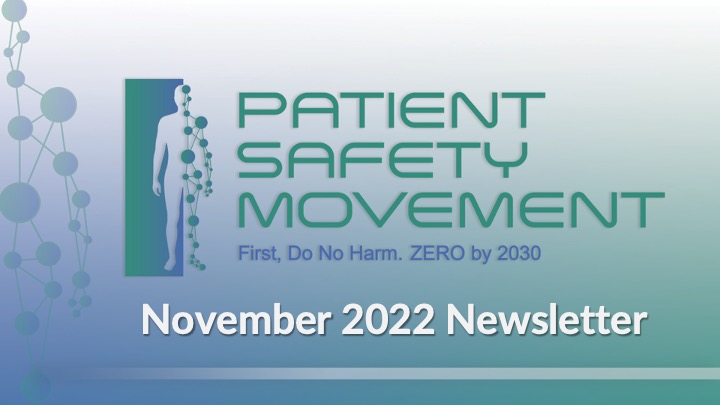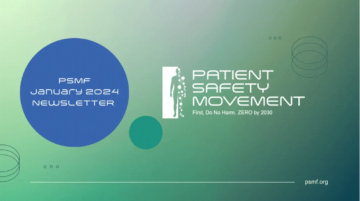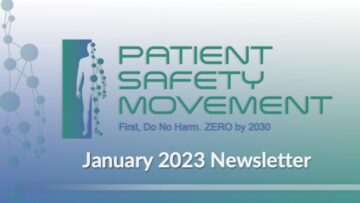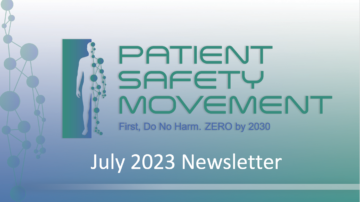|
NATIONAL DIABETES AWARENESS MONTH
Like many other health concerns that were overshadowed these past two-plus years, diabetes is still growing at an epidemic rate in the US, affecting more than 37 million adults and children nationwide. And it’s largely preventable—if not the disease itself (in the case of Type 2 diabetes) then at least the most severe outcomes. These include kidney disease, vision loss, heart disease, foot problems, and stroke.
Managing diabetes as early as possible is key, which is why this year’s theme for National Diabetes Month is building a healthcare team. The patient is the most important member of their own healthcare team, as diabetes treatment involves a lot of self-care and preventative lifestyle choices. However, in addition to primary care physicians and specialists, the team can also consist of a dietician, certified diabetes educator, pharmacist, mental healthcare professional, and social worker (for assistance with finding financial aid for treatment and community resources).
The NIH outlines a four-step program to manage diabetes for life:
- Learn about Diabetes: With Type 1, your body does not make insulin; with Type 2, the most common, your body doesn’t make or use insulin well.
- Know Your Diabetes ABCs: A is for A1C blood test to measure average blood sugar levels over the past three months. B is for blood pressure, with a goal below 140/90 for most people. And C is for cholesterol, whose optimal target numbers vary with age and other factors.
- Learn How to Live with Diabetes: Managing stress levels, losing weight, being active and exercising regularly (walking, yoga, gardening, etc.), and eating well (foods lower in calories, saturated fat, trans fat, sugar, and salt, but higher in fiber) are important for both managing diabetes and to prevent or delay its onset (prediabetes).
- Get Routine Care to Stay Healthy: Regular checkups are paramount. Your doctor can check your blood pressure, weight, A1C and cholesterol blood levels, foot complications, and other warning signs of risk factors for prediabetes or the development of worsening related symptoms for those with an existing diabetes diagnosis.
For additional tools and support, visit https://diabetes.org/tools-support.
DR. BREANNE EVERETT ON TREATING DIABETES
Dr. Breanne Everett, CEO and President at Orpyx Medical, discusses the different types of diabetes, comorbidities associated with the disease, and the prevention and management of diabetes-related complications to improve patient quality of life and reduce healthcare costs.
SENATE REPORT ON CYBERSECURITY AND PATIENT SAFETY

This month, US Senator Mark Warner of Virginia issued a 36-page report titled “Cybersecurity Is Patient Safety: Policy Options in the Health Care Sector.” The report details the unique vulnerabilities faced by the healthcare sector to cybersecurity and ransomware attacks, which are on the rise, and the risks they pose to patient safety. According to the report, cybersecurity attacks on healthcare providers reached an all-time high in 2021, with one study indicating that more than 45 million people were affected by such attacks in 2021 (a 32% increase over 2020).
The report concluded,
“As cybersecurity becomes an increasingly dangerous threat, so does the potential for harm to patient safety. Any delays caused by cybersecurity inevitably affect patient care negatively. Unless we act now, this situation will get worse…. The federal government and the health sector must find a balanced approach to meet the dire threats, together as partners with shared responsibilities.”
Hospitals currently rely on technology for everything, from setting appointments to doing tests, and clinicians need access to a patient’s medical records to make decisions on care. During a cyberattack, treatment can become delayed, and hospitals have to prioritize patients based on urgency, creating a large backlog for care and increasing risks to patient safety.
The Senator’s report outlines suggested processes for mitigating risks and negative outcomes. First and foremost, it is critical for hospitals to have a detailed cybersecurity plan in place that includes training staff to ensure patient safety efforts are not derailed in the event of an attack. In the meantime, patients must learn how to be their own patient advocate and keep accessible copies of their medical records.
The PSMF has responded with a letter of support of the report’s conclusions, and we will monitor the report’s progress through the Senate as it possibly forms the basis of future legislation.
HHS ACTION ALLIANCE TO ADVANCE PATIENT SAFETY

The Department of Health and Human Services (HHS), which led the creation of Safer Together: A National Action Plan to Advance Patient Safety, is launching an initiative to support healthcare organizations in implementing recommendations of the National Action Plan. In partnership with healthcare systems and other stakeholders, HHS is co-creating The National Healthcare System Action Alliance to Advance Patient Safety.
HHS’s current priorities include improving equity, addressing Long COVID, harnessing the potential of telehealth and data sciences, responding to climate change, expanding access to behavioral healthcare, and supporting the well-being of healthcare workers. It considers patient safety integral to all these priorities.
The core principles of the Action Alliance are:
- Culture, Leadership, and Governance — To demonstrate and foster commitments to safety as a core value and promote the development of safety cultures.
- Patient and Family Engagement — To instill the practice of co-designing and co-producing care with patients, families, and care partners.
- Healthcare Workforce Safety — To ensure the safety and resiliency of healthcare organizations and workforces as a precondition to advancing patient safety.
- Learning System — To foster networked and continuous learning within and across healthcare organizations at all levels.
The Action Alliance will begin as a learning community when it launches in 2023 and engage Action Alliance participants in sharing evidence-based approaches to improving patient and healthcare worker safety. For more information, visit the Agency for Healthcare Research and Quality (AHRQ) website.
IMPLEMENTING THE GLOBAL PATIENT SAFETY ACTION PLAN 2021–2030: PANDEMIC AND BEYOND

Next week, a Patient Safety Movement Foundation representative is participating in a special meeting convened by WHO in Geneva, Switzerland. The Global Experts’ Consultation titled “Implementing the Global Patient Safety Action Plan 2021–2030: Pandemic and Beyond” represents the next phase in WHO’s ongoing efforts to improve patient safety globally.
WHO’s patient safety initiatives kicked off in earnest in 2019 when the World Health Assembly adopted resolution WHA72.6: “Global Action on Patient Safety.” It reaffirmed the need for member states “to promote and improve patient safety across health systems at all levels, sectors, and settings” and to “integrate and implement patient safety strategies … to prevent avoidable harm to patients related to health care procedures, products and devices.”
In 2021, the Seventy-Fourth World Health Assembly approved the Global Patient Safety Action Plan 2021–2030, and the first-ever Global Patient Safety Report is being developed for submission to the Assembly in early 2023, based on data collected from a Member State Patient Safety survey.
The December Global Experts’ Consultation is being called to:
- Discuss the proposed operational guide on COVID-19 and patient safety.
- Review the progress of implementation of the Global Patient Safety Action Plan, including discussion on the member states’ survey findings.
- Review the outline and draft content for the Global Patient Safety Report 2023.
Ending preventable patient harm has always been a global concern, and working together with our international colleagues is a proven method toward achieving our goal. The PSMF welcomes WHO’s active stance on the issue, and we look forward to continuing and expanding our global collaborations through conferences such as this.

CHAIRMAN’S COLUMN
 Two key elements as we address the senseless loss of life and continued harm in maternal and neonatal health are hierarchy of decision making and transparency of outcomes in an increasingly fearful environment for expectant mothers and partners, midwives, nurses, and relevant doctors.
Two key elements as we address the senseless loss of life and continued harm in maternal and neonatal health are hierarchy of decision making and transparency of outcomes in an increasingly fearful environment for expectant mothers and partners, midwives, nurses, and relevant doctors.
The data clearly demonstrates that despite decades of investment in education, training, and monitoring, we still see unacceptable rates of maternal and neonatal mortality and harm.
The recent MBRRACE-UK Report identifies the lessons learned to inform maternity care from the UK and Ireland Confidential Enquiries into Maternal Deaths and Morbidity for the period 2018–2020.* Key messages from the report were that:
- 229 (10.9/100K giving birth) mothers died within 6 weeks, and an additional 289 (13.8/100K) died between 6 weeks and the first year, leaving 386 motherless children.
- Most women (86%) died in the postnatal period.
- Black women were 3.7x more likely to die than white women (34/100K).
- Asian women were 1.8x more likely to die than white women (16/100<).
- More women from deprived areas are dying, and this continues to increase.
In 2020, women were 3x more likely to die by suicide during or up to 6 weeks after the end of pregnancy compared to 2017 (191.5/100K).
The report also identifies key action areas for professional organizations, policy makers, and service providers, together with those for health professionals and education providers. The first three being to:
- Develop guidance for the use of Brain Natriuretic Peptide measurement in pregnancy
- Develop guidance on ketone testing in pregnancy and the subsequent response to an abnormal test
- Ensure that guidance on the management of diabetic ketoacidosis in pregnancy is included in all guidelines used outside of the maternity setting
When we pause to look at the wider world, we find the data is even more compelling and identifies that we need to work on a truly global basis to create a sustainable and resilient change of direction.
A recent CDC report in the US reviewed 1,018 pregnancy-related deaths from across 36 states between 2017 and 2019, and the data identified that up to 80% of deaths in the perinatal period up to a year postpartum were from preventable causes. Similar findings as found in the UK on the impact of race and ethnicity were also apparent.
Among the 1,018 pregnancy-related deaths, an underlying cause of death was identified for 987 deaths. The six most frequent underlying causes of pregnancy-related death — mental health conditions (22.7%), hemorrhage (13.7%), cardiac and coronary conditions (12.8%), infection (9.2%), thrombotic embolism (8.7%), and cardiomyopathy (8.5%) — accounted for over 75% of pregnancy-related deaths.
Among the 1,018 pregnancy-related deaths, a preventability determination was made for 996 deaths. Among these, 839 (84%) were determined to be preventable.
Mary Dixon-Woods has led ethnographic research in many aspects of hospital systems and has recently completed work identifying seven features of safety in maternity units. These were:
- Commitment to safety and improvement at all levels with everyone involved
- Multiple problem-sensing systems used as basis of action
- Technical competence supported by formal training and informal learning
- Teamwork, cooperation, and positive working relationships
- Constant reinforcing of safe, ethical, and respectful behaviors
- Systems and processes designed for safety and regularly reviewed and optimized
It is time now, as in many other specialty areas of healthcare, to ensure adequate support is in place for all healthcare professionals. We need to move away from the fearful organization, and as Amy Edmondson describes, we need a system of psychological safety with innovation, learning, and growth at its heart.
Yours,

Mike Durkin, OBE, MBBS, FRCA, FRCP, DSC
* Knight M, Bunch K, Patel R, Shakespeare J, Kotnis R, Kenyon S, Kurinczuk JJ (Eds.) on behalf of MBRRACE-UK. Saving Lives, Improving Mothers’ Care Core Report – Lessons learned to inform maternity care from the UK and Ireland Confidential Enquiries into Maternal Deaths and Morbidity 2018-20. Oxford: National Perinatal Epidemiology Unit, University of Oxford 2022.
GOVERNANCE BOARD
Mike Durkin, OBE, MBBS, FRCA, FRCP, DSC, Chairman of PSMF, Senior advisor on Patient Safety Policy and Leadership, Institute of Global Health Innovation, Imperial College London
Steven J. Barker, PhD, MD, Chief Science Officer, Masimo Corporation, Professor Emeritus of Anesthesiology, University of Arizona Health Sciences
Robin Betts, RN, CPHQ, MBA-HA, Vice Chair, PSMF, Vice President, Safety Quality & Regulatory Services, Kaiser Foundation Hospitals and Health Plan, Kaiser Permanente Northern California
Alicia Cole, Patient Safety Consultant
Javier T. Davila, MD, MFS, Ambassador, PSMF in Mexico, Former Medical Director, Mexican Social Security Institute, Head of Medical Education, Research and Health Public Policy
Omar Ishrak, PhD, Executive Chairman and Chairman of the Board of Directors, Medtronic, Chairman of the Board of Directors, Intel
Philip D. Lumb, MB, BS, MD, MCCM, FCCP, Professor of Anesthesiology and Trauma Surgery, Keck School of Medicine at University of Southern California
Joe Kiani, Founder and Immediate Past Chairman of PSMF, Founder, Chairman & CEO of Masimo
Sarah Kiani, Director, Masimo Foundation for Ethics, Innovation, and Competition
David B. Mayer, MD, Executive Director, MedStar Institute for Quality and Safety
Jannicke Mellin-Olsen, MD, DPH, Past President, World Federation of Societies of Anesthesiologists
Jim Messina, CEO, The Messina Group
Najmedin Meshkati, Ph.D, MS, Professor of Civil/Environmental Engineering, University of Southern California
Charlie Miceli, CPM, Treasurer, PSMF, Chief Supply Chain Officer, Network VP of University of Vermont Health Network
Michael A.E. Ramsay, MD, FRCA, Chief Executive Officer, PSMF
Abbasseh Towfigh, MPD, Executive Director and Secretary, Ayeneh Foundation
Vonda Vaden Bates, Patient Advocate, CEO, 10th Dot
IN THE NEWS
- The US government’s Health and Human Services department is preparing to launch a National Healthcare System Action Alliance to Advance Patient Safety next year in conjunction with other federal departments, including the CDC and FDA, as reported by the American Hospital Association.
- A blog post on Nurses.org outlined Whistleblower Rights and Protections for Nurses, who play a critical role in protecting patient safety and are often the first to witness and report potential problems.
- A recent commentary in the Journal of Pharmaceutical Policy and Practice reveals that branded drug samples handed out by the pharmaceutical industry actually increase drug costs for everyone and can compromise patient safety.
- Keck Medicine of USC is enhancing its commitment to patient safety and quality care with two newly created leadership positions: the health system’s first chief quality officer and the first chief quality officer at USC Verdugo Hills Hospital.
- A new Patient Safety Bill in Ireland will make it mandatory for all private hospitals and health service providers to report serious patient safety incidents. Until now, only public hospitals were required to do so.

DONATE TODAY
OUR STORY
 In 2012, Joe Kiani founded the nonprofit Patient Safety Movement Foundation (PSMF) to eliminate preventable medical errors in hospitals. His team worked with patient safety experts from around the world to create Actionable Evidence-Based Practices (AEBP) that address the top challenges. The AEBP is available without charge to hospitals online.
In 2012, Joe Kiani founded the nonprofit Patient Safety Movement Foundation (PSMF) to eliminate preventable medical errors in hospitals. His team worked with patient safety experts from around the world to create Actionable Evidence-Based Practices (AEBP) that address the top challenges. The AEBP is available without charge to hospitals online.
Hospitals are encouraged to make a formal commitment to ZERO preventable deaths, and healthcare technology companies are asked to sign the Open Data Pledge to share their data so that predictive algorithms that can identify errors before they become fatal can be developed. The Foundation’s annual World Patient Safety, Science & Technology Summit brings together all stakeholders, including patients, healthcare providers, medical technology companies, government employers, and private payers. The PSMF was established through the support of the Masimo Foundation for Ethics, Innovation, and Competition in Healthcare. For more information, please visit psmf.org.
![]()








